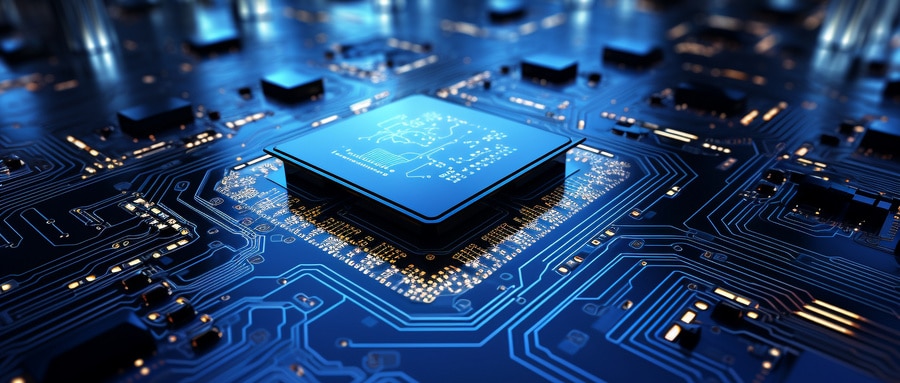Blank PCB: A Source of Power in Modern Electronics
Technology pervades every aspect of our lives, yet most of us take for granted its intricacies and innovation behind every digital device we own. At its heart lies an unsung hero: PCB or Printed Circuit Boards.
Understanding Blank PCBs
Understanding Blank PCBs PCBs (Printed Circuit Boards) serve as the base board for physically supporting and wiring surface-mounted and socketed components in electronic systems. “Blank” refers to boards which have yet to be filled up with components – effectively becoming the canvas upon which electronic masterpieces will take shape. PCBs play a pivotal role in everything from simple devices such as digital clocks to complex radar and computer systems.
Types of Blank PCB
PCBs come in three primary forms; Single-sided, Double-sided and Multilayer PCBs. Single-sided boards use components placed solely on one side for ease of assembly, making them the simplest and most frequently employed type. Double-sided PCBs incorporate components on both sides; multilayer PCBs stack multiple boards together increasing complexity and efficiency – the type chosen will depend heavily on its intended device complexity and functionality.
Making of a Blank PCB
Manufacturing a PCB involves an intricate multi-step process. First is the preparation of the board material – typically composed of glass fibre and epoxy resin – before layering copper layers to both sides of the board using photolithography technology; next comes photolithographic circuit patterning before finally drilling holes for component leads with treatment to ensure reliable electrical connections are made between holes drilled for component leads and treated holes for components leads.
Applications of Blank PCBs
PCBs are ubiquitous within electronics. Their role is to make devices smaller, simpler, and faster while improving reliability and speed of production. From computing systems and medical equipment to telecom gadgets and industrial machinery to automotive systems – blank PCBs are ubiquitous!
Increased Adoption of Blank PCBs
As technology develops, demand for smaller and more energy-efficient electronic devices increases. PCB technology has evolved over time from simply being a platform for component mounting into becoming an active participant in device operation – leading to its ubiquity across various fields of technology. Blank PCBs play an essential role as integral parts of modern systems.

Blank PCBs may seem invisible to us as end-users, yet they form the core of virtually all technology we depend on – from your smartphone charging cable to controlling traffic signals in smart cities – yet their impact cannot be overstated. With greater understanding and demand for them only growing over time, perhaps these tiny powerhouses may soon become the most visible.
So the next time you look at your phone or computer screen, spare a moment for the Blank PCB – an unsung hero working tirelessly behind-the-scenes to power our lives.
FAQ:
- Q: What is a blank printed circuit board?
A: A blank printed circuit board, also known as a bare PCB, is a board that has not yet had any tracks or circuitry applied. It is typically composed of a base material and a layer of copper. - Q: What materials are commonly used to make blank printed circuit boards?
A: Common materials include FR4 (Flame Retardant 4), which is a grade of glass-reinforced epoxy laminate material. The copper layer is often either on one or both sides. - Q: How is a blank printed circuit board used in the manufacturing process?
A: A blank printed circuit board is used as the starting point for creating a finished, populated PCB. It undergoes processes such as etching, drilling, plating, solder masking, and printing to create the desired circuit board. - Q: Can you purchase blank printed circuit boards?
A: Yes, you can purchase blank printed circuit boards from a variety of sources, including online electronics suppliers and specialty stores. - Q: What sizes do blank printed circuit boards come in?
A: Blank printed circuit boards are available in multiple sizes and shapes. Some suppliers offer services to cut a specific size or shape according to your needs. - Q: Can I create a prototype using a blank printed circuit board?
A: Absolutely. In fact, creating a prototype is one of the most common uses for blank printed circuit boards, whether for hobbyists or for professional development. - Q: How can I create my own tracks on a blank printed circuit board?
A: This is typically done through a process called etching, which can involve transferring your circuit design to the PCB using a resist material, and then using a chemical solution to remove unwanted copper. - Q: Should I use single-sided or double-sided blank printed circuit boards?
A: This depends on your circuit requirements. You may need a double-sided board if your design requires more components and connections than can fit on a single side. - Q: Can I solder components directly onto a blank printed circuit board?
A: Yes, but the PCB will usually need to undergo a number of steps first to prepare it, such as etching the layout, drilling holes, and applying a solder mask. - Q: Are there safety precautions to consider when working with blank printed circuit boards?
A: Yes, common precautions involve handling chemicals safely when etching, using protective equipment to prevent harm from soldering fumes, and careful handling to prevent board damage.























